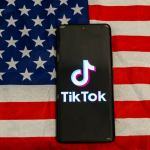Contrary to popular narratives of “coming out,” understanding and accepting your queerness is an ongoing process for many people. Whether it’s the fact that “coming out” is something you feel you have to do every time you meet someone new or that your identity itself is shifting, there is no set version or “final reveal.” Instead, we have to find ways to understand ourselves and present that to each other in a way that reflects us at that moment. And style makes up a huge part of that equation.
The clothes we wear as queer people have no single meaning. They can be a way to show how we actively reject the world’s norms or the way we ensure our safety in a world that remains hostile to us. They can be how we affirm our gender expression or they can show how clothes have no inherent gender. They can be a loud statement about our sexuality or a subtle nod to no one but ourselves. But, while there is still danger in being publicly “other” for all queer people, especially those who are trans and gender-nonconforming, the outfits we wear have to negotiate the freedom of pride with the very real threat of violence. And in negotiating that balance, many of us find new ways to express ourselves.
To explore the ways that queerness is intertwined with the outfits we choose, we invited four people to share the outfit that, at this particular moment, speaks to their queerness and why.
For some, what we wear is as simple as this is who I am and this is what I want to wear, while for others, it is a constant negotiation between safety and self-expression. Queerness takes many forms and expressing it through our clothing can be a form of celebration, a form of protection, or just a matter of fact.
The outfit I chose was a black, oversized pantsuit with a latex bodysuit worn underneath and my trusty Margiela Tabi boots. I chose this outfit because it brings together so many elements of who I am — my sexuality and my professionalism, my masculinity and my femininity, my humor and my sincerity.
I spent a lot of my younger years constraining the way I dressed because I was also constraining my queerness. When I embraced being queer, and then later in life, when I embraced being gender nonconforming, I felt able to put my own wants and desires first. This extended to the way I dress and present, and I started to wear clothes that felt most comfortable, expressive, and representative of who I am.
For the most part, I am largely femme-presenting. This can be difficult because I have always had a fuller figure and what would be termed a “womanly body.” My gender-queerness is often completely erased or denied because of the body I inhabit and the fact that I feel comfortable embracing my femininity through dress. My gender-queerness is often seen, by both queer and straight people, as less valid or worthy. This leads to constantly being misgendered, having my gender undermined, and having to negotiate the gender dysphoria that comes with that.
On top of that, my body and gender expression mean that I experience a lot of sexual harassment in the street, and has also been the site of historical sexual abuse and trauma. As a survivor, constantly being reminded of the unwelcome gazes that my body meets is exhausting and roots me in my body and my gender in both liberating and heartbreaking ways.
For me, the way I dress is a way to resist all of these experiences. It is standing in the face of a society that is obsessed with policing, containing, and violating my body, and telling it to fuck off. It is refusing to conform to narrow ideals of what is expected of me, both because of the gender I was assigned at birth and my true gender identity. I should not have to forfeit my femininity and the elements of womanhood that bring me joy and liberation to be seen as validly gender-queer, but that femininity shouldn’t mean I am automatically assumed to identify as a woman. I thought we were trying to resist these narrow binaries?
Dress is a way for me to reclaim my body from other people’s conceptions of it. It allows me to make my own rules and pave my own path.
Feeling fully myself means wearing something that brings me joy. That joy can come from wearing something that expresses my style, sexuality, politics, or personality, or from wearing something pink and fluffy or something cozy and comfy. I have to dress to match my mood and my mood changes a lot. The freedom to chop and change how I dress and present myself to the world feels like freedom, and that’s when I feel fully “myself.”
For the shoot, I wore what I wore a week ago and looked in the mirror and said, “Fuck yes, I feel like PJ Harvey in the star top.” And the layers — I love a good layer. It’s a good sign if I feel like I can stomp on someone or feel like PJ Harvey, and I go with it.
I wouldn’t really say [the way I dress] relates to my queerness as much as it does my transness. I get to wear all the clothes I didn’t get to wear — for me, it’s like Bratz doll collectible items that I get to throw on and change up. A huge part of what I wear is very fictional and fantasy-based as it goes off what the mood is for today — what makes it easier for me is to create a narrative around my outfit or some kind of energy that I want to channel in the day. If I want to wear it, I wear it. It is like making up characters for the day. I like doing that.
I don’t really see the way I dress as inviting people into my queerness — they can come in and have some tea if they want, as long as they don’t eat all the biscuits.
I mean, I’ve always been myself — in that moment of my life, when I wore that outfit, everything was experimentation, like, what I wear doesn’t define my transness. My see-through slip dress with a thong and boots to Lidl doesn’t define my transness, my joggers and jumper don’t define my transness, however [they exist as] a gateway for me to explore my womanhood. I’ve definitely come out of my shell more and stopped taking what I wear seriously as it is [only] fabric. But by saying that, there is always a survival aspect to checking myself in a mirror and analyzing every curve and silhouette on my body in the reflection of a building I’m passing by and through the eyes of strangers, men especially. Over the years, it’s gotten worse. I guess it’s linked with the rising transphobia and the dysphoria I’m feeling.
I will always be myself in whatever I’m wearing — the vital part of that is what I feel comfortable in, how I feel in it, and what I want to display on my body that day. In the outfit I chose, I felt good, I felt sexy, I felt stupid, and I felt stunning.
For the shoot, I wore my late grandfather’s suit with a gold lace toile I never used or saw value in until now, from my collection a few years ago; pink Hoka sneakers — my friend Steph put me onto those; a green puffer I probably haven’t taken off for a year, and a green flower hair tie I got from a hair shop on Walworth Road. Plus, a bunch of jewelry from friends and charity stores.
I don’t really know how the way I dress interacts with my queerness. I could give you the Pride answer but I am queer and wear what I want. If I am really feeling [a certain] way I will dress up for my friends because that is love and that is a gift.
In the way I dress, I am gesturing that I am glamorous, funny, and I hope low-key. Looking queer is not difficult for me — I radiate faggot. I hope that’s what people see when I put on my earrings, my rings, my blush, and my terrible outfit, and walk 20 miles an hour down the street, the sound of “Free” by Ultra Naté busting out of my headphones. I hope it’s clear as day and that you already know if you want to stop and talk to me.
In recent years, I’ve leaned into the fact I don’t pass, and there’s no liberation for me in being a target for violence right now. So I stopped dressing as femme, I feel autonomous and safer and that is profound when you have walked the street visibly trans before. I’ve been out as non-binary for over a decade now and I have found the way I dress or look doesn’t inform or affirm my gender identity the way it used to. My soul, my generosity, and my desire do that for me now. What I create informs that for me now. I have shifted, I no longer look at myself from afar as if I am a stranger to resolve. This time away from visibility has regained for me some resilience and patience and I do see a femmer future for myself, however. But it is also a future that is more loving and forgiving.
I don’t really think I have felt “fully myself” through wearing an outfit in years. It just doesn’t carry that weight or responsibility anymore. The optics of presentation have died out for me. That being said, nothing makes me feel more connected to my people than the occasional wearing of a dress at night alone, safe in my room like the thousands of non-passing crossdressers before me. I hope that doesn’t hurt anyone’s feelings, that I am not the token, prideful, open trans girl you want us all to be but right now I am continuing the legacy of being gorgeous behind closed doors. I have incinerated any shame I have within me and I invite you to do the same.
I find that new clothing accompanies periods of emergence and while I’m not sure where those come from, it’s easy to spot when I’m feeling ready to be in the world. Many of the words to describe how “dressing interacts with my queerness” are contradictory — I’d say “arbitrarily,” for the chunk of my wardrobe that’s stuck around for years, and “exhausting” for the mileage a lot of the garments have in making me “visible,” which can feel neutral, exciting, or sometimes horrible. I wore this outfit because I’ve been enjoying sports bras a lot recently and wanted proof.
There are two things that come to mind with an invitation. Being gender nonconforming often puts you in the public arena for comment. Often these daily interruptions are exacerbated from without, when someone’s inclined to read all they know about transness and gender into you. It bears the weight of a typology, where each trans folk becomes, in that moment, a locus for a loud conversation happening somewhere else. I’ve been in situations where I’ve found myself a spectacle for someone’s projection, when I’m offered a kind comment on “looking gorgeous,” or a topic, when an interlocutor tries to assail me with the sex binary, usually on a train. Dressing for me has often been a mixture of safe and pleasurable solipsism, alongside a process of curating something interesting. I’m not willing to condemn the total attention it brings, but if I am honest, that’s entirely a collateral thing. The second point is that dressing may be, at best, a shibboleth for those with who I want to be in communion. If you know, you know. Clocking and the secondhand joy parceled around an acknowledgment are an effect of that first commitment, to articulate one’s own grace.
Dressing is always unfinished work, where I’m using culture to say something outside of my control. While I can sell myself through clothing, the “clothes that make me feel myself” are so often a question of who’s selling what. I have proximity to an ecosystem of queers being sold to the public because I have to make money to prove things to my job coach. Production continues to devastate ecology and I continue to generate revenue for companies and magazines. What I would say is that I get excited at technique — “upcycling,” “culture jamming,” and detaching as much as possible from the normative economy of things. Like anyone else, I desire an ideal, and I need to be able to distinguish this from the dynamics of consumption. This continues to offer a tiny respite in the face of an ailing climate.
Like what you see? How about some more R29 goodness, right here?
How The Pandemic Transformed Queer Spaces
Powered by WPeMatico






